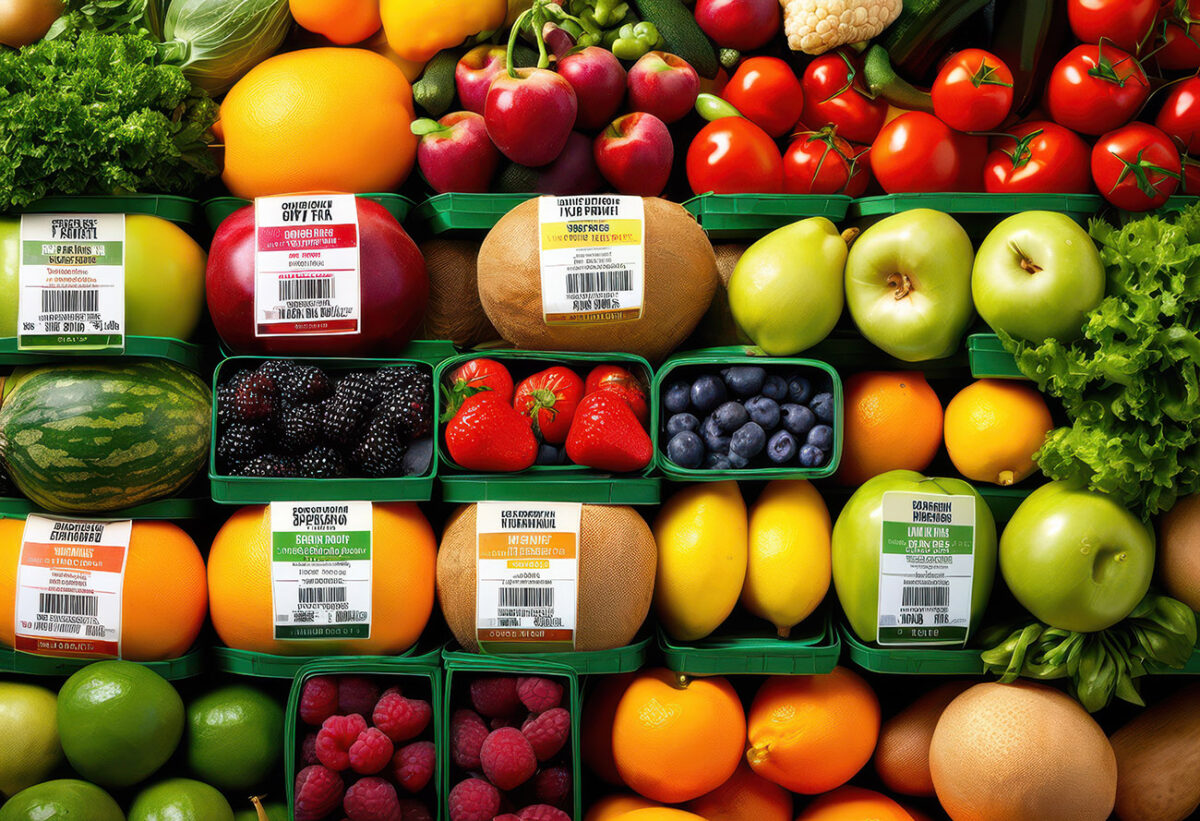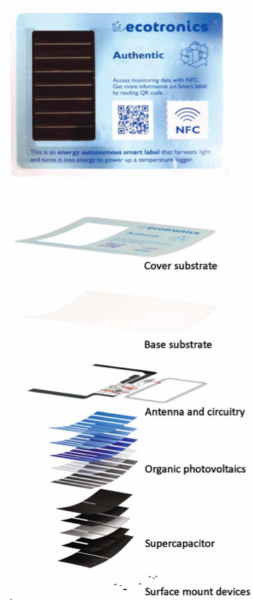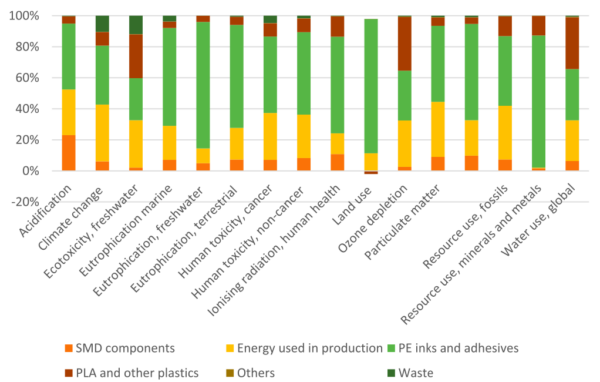LCA of Smart Labels – Insights for Intelligent Packaging

Researchers in Finland developed a new smart label for intelligent packaging and conducted a life cycle assessment (LCA) to evaluate its environmental impacts.
Intelligent packaging technologies improve product safety and reduce food waste. This article explores an energy-autonomous smart label’s life cycle assessment (LCA). Researchers designed the label to monitor temperature and log data, particularly for food products.
You can also read: Life Cycle Assessment: From Packaging into Paving Blocks
Smart Label Structure
The smart label contains multiple layers, including printed circuitry, organic photovoltaics (OPVs), a supercapacitor for energy storage, and surface-mount devices. Scientists assembled these components into a compact structure optimized for data transmission via NFC.

The image illustrates the structure of the fabricated smart label. Courtesy of the Life cycle assessment of a new smart label for intelligent packaging.
Materials and Methods
The LCA assessed five phases of the label’s production. It used the SULCA calculation tool and data primarily from the Ecoinvent database. The analysis focused on material inputs like printed electronics, inks, adhesives, and PLA film. It also considered energy consumption, especially during antenna screen printing and OPV production. The study incorporated pilot-scale production data and assumed higher efficiency at an industrial level. It also factored in waste management practices, such as incineration and landfilling.
LCA Findings
Materials and energy consumption during production created the greatest environmental impact.

The figure shows the main processes that contribute to the total impacts. Courtesy of the Life cycle assessment of a new smart label for intelligent packaging.
The silver paste used in the antenna contributed significantly to the footprint but replacing it with copper could reduce impacts by several percentages. Using renewable energy and recovering process heat could also decrease the environmental impact by 20%-30%. Scaling production to industrial levels would further reduce the effect by optimizing processes and materials.
Outweigh Challenges
By scaling production, optimizing processes, and using alternative materials, researchers can lower the label’s environmental footprint. Although recycling intelligent packaging remains challenging due to material mixtures, the smart label’s potential to reduce food spoilage can offset some environmental costs. Further optimization includes reducing label size and component count to help lower material and energy consumption.
This LCA highlights the environmental challenges and the benefits of the smart label. Despite the high impact during production, the label’s ability to reduce food waste could offer significant environmental advantages. This is particularly true when combined with material efficiency improvements and optimized production processes.
